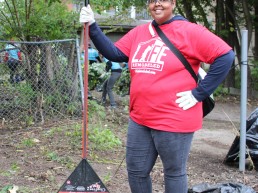Build it and they will stay
No matter the economic outlook in Northeast Ohio, the need for a talented and skilled workforce remains.
Employers must attract, retain and grow a workforce with the skills needed to keep the region competitive in the health care, manufacturing and IT industries in this unprecedented time and beyond.
But there’s a mismatch between the skills employers need and the skills students have, especially in the post-pandemic job market as new career avenues open.
Delta Dental of Ohio has been stepping up to tackle the talent crisis. In partnership with Junior Achievement of Greater Cleveland and Team NEO, a nonprofit organization focused on regional economic development, we invested in the annual Aligning Opportunities report, which offers an in-depth look at the supply and demand of talent in the region.
The report shares data about the three key industries in need of workers and helps HR leaders, employers and educators see the holes that exist, especially the equity gap among people of color.
Through a series of workshops, career fairs, panel discussions and local news coverage, we have started the regional conversation about building communities with economic vitality and opportunities for workers.
Roundtable at Rhodes
The first step in understanding challenges high schoolers face is going straight to the source.
Together with our partners, we convened a group of 11th-graders from Rhodes College and Career Academy in Cleveland to hear their career aspirations and the roadblocks that threaten to derail their plans. This conversation took place before the coronavirus outbreak.
The students pointed to the absence of support at home, lack of hands-on learning opportunities, concerns about college affordability and mental health support. Yet, they remain motivated to pursue post-secondary education.
“Nobody in my family has ever (gone to college.) I feel like basically the first generation,” a Rhodes student said.
A panel of local business and community leaders reacted to the students’ discussion. Panelists cited cost and complexity as the biggest obstructions to maintain a healthy workforce. They were, however, optimistic about resources like Say Yes Cleveland and the Cleveland Innovation Project that are guiding students toward viable careers.
Some panelists noted that personal challenges students face don’t always stay at home. When families are in crisis, students suffer. They also noted education should be viewed as a lifestyle rather than a singular event so students can become lifelong learners and flex their skills to match the in-demand jobs.
The jobs that exist today – at least the jobs we are hiring for—did not even exist five years ago, let alone 25 years ago
—Andy Jones, CEO of MCPc.

The perfect fit
For Corey Pettit, finding success after graduation meant finding employment as soon as possible.
The Akron area teen knew he never wanted to go to college.
“I did not want any more time sitting in a classroom,” Corey said. With three older sisters who pursued post-secondary degrees, still paying off student debt, Corey knew that wasn’t in his future.
Thanks to Akron Public Schools Online, he was able to take general classes remotely during high school, working on credits at his own pace. That’s when he was introduced to machine shop, and a visible shift in his plans occurred. His mentality about school changed.
He scored all A’s in machine shop, completed his credits early, passed his certification test and quickly found a job at a local machine shop, Signature Mold and Fabrication in Akron.
Working 40 hours a week just a few miles from home, Corey’s making a living wage — enough to put cash in the bank, pay his car insurance and his cell phone bill.
“I really like my job,” Corey said. “I’ve always wanted to do something with my hands, to work hard and be successful.”
But aside from finding a job he enjoys, Corey also is helping fill the workforce gap.
According to regional data, about 80,000 manufacturing workers ages 55 and older are planning to leave the labor market, and the attraction of skilled workers is the No. 1 challenge hampering industry growth. With a demand for more than 21,000 jobs just last year, manufacturing is facing a critical shortage of workers.
Which explains why Corey’s boss, Rick, is so thrilled to have him on payroll. He’s never had a worker as young as Corey before, but he has been willing to work with him and teach him the skills he needs to do well.



